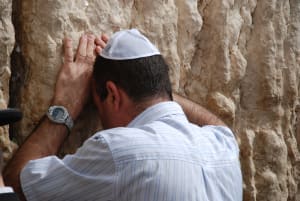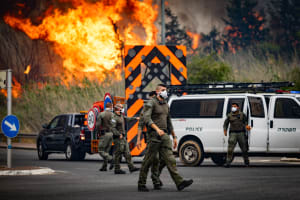Yom Kippur: The Day of Atonement and its foreshadowing of God's redemption through the Messiah

The holiest day of the year in Israel is Yom Kippur, the Day of Atonement. Understanding its rich spiritual meaning and significance offers profound insight into God's wonderful plan of salvation for humanity.
When God commanded Yom Kippur in Leviticus 16:29-31, He didn’t merely establish a holiday but a precursor to His plan of salvation through Yeshua (Jesus).
“This shall be a statute forever for you: In the seventh month, on the tenth day of the month, you shall afflict your souls, and do no work at all, whether a native of your own country or a stranger who dwells among you. For on that day, the priest shall make atonement for you, to cleanse you, that you may be clean from all your sins before the Lord. It is a sabbath of solemn rest for you, and you shall afflict your souls. It is a statute forever.” Leviticus 16:29-31
The Hebrew word "Kippur" derives from the root "כפר," meaning "to cover" or "to atone." This definition prophetically foreshadows the covering of our sins through Yeshua (Jesus). The apostle Paul, in Romans 3:25, speaks of Yeshua as a “propitiation” (Greek: ἱλαστήριον, hilastērion), which is generally translated as “mercy seat,” creating a direct connection with Kaporet (כפורת) found in Leviticus concerning the Ark of the Covenant on which the sacrificial blood was sprinkled.
Yom Kippur’s fundamental meaning and goal was to push the children of Israel to reconciliation with God through repentance and the atonement of their sins. In Leviticus 16, among other things, God established the scapegoat ritual, where one goat was sacrificed while the other symbolically bore the sins of the children of Israel and was sent into the wilderness. This highlights the seriousness of sin and the necessity for it to be covered, underscoring God's intent for humanity to be restored to a right relationship with Him.
An intriguing tradition associated with Yom Kippur and the scapegoats involves the red thread tied to the Temple. According to Rabbinic tradition, during the Second Temple period, a crimson thread would turn white to signify the forgiveness of Israel’s sins (Talmud Bavli, Tractate Yoma 39b). It is interesting to note that Tractate Yoma 39b and Tractate Rosh Hashanah 31b mention this phenomenon happening around 40 years before the destruction of the Temple, hence circa 30 C.E. The cessation of this phenomenon and the destruction of the Temple in 70 C.E. have been interpreted as signs of God’s displeasure and mark the shift of focus from sacrificial atonement to prayer and repentance. Nonetheless, we needn’t spend much time here detailing what happened approximately 40 years before the destruction of the Temple, except to mention that for many today, it is clear that God’s redemptive plan clearly foreshadowed the ultimate sacrifice of Yeshua, whose blood brings eternal atonement.
We know from the Bible in Leviticus 16 and from Jewish writings in the Mishna (Yoma) that Yom Kippur is the only day of the year when the Kohen Gadol (High Priest) was allowed to enter the Holy of Holies to make atonement for the children of Israel. Hebrews 9:6-28 clearly states that Yeshua is our High Priest who made atonement for us who believe in Him as Savior and Messiah.
Hebrew 9:11+12 But when the Messiah (Christ) appeared as cohen gadol (high priest) of the good things that are happening already, then, through the greater and more perfect Tent (tabernacle) which is not man-made, that is, it is not of this created world, He entered the Holiest Place once and for all. And he entered not by means of the blood of goats and calves, but by means of his own blood, thus setting people free forever.
His death and resurrection provide a means of covering sin once and for all, inviting everyone into a restored relationship with God. This connection reinforces the belief that while the rituals of Yom Kippur were significant, they ultimately pointed to a greater reality, God’s redemptive work through Yeshua.
This year’s Yom Kippur is marred not only by the reminder of our sinful nature and our need for the Messiah but also by the wars on seven fronts that Israel is facing. This situation is reminiscent of the Yom Kippur War of 1973, when the nation faced a sudden conflict. Such events serve as a time for all to reflect on their need for God’s mercy. While many of our soldiers will be embroiled in combat, this Yom Kippur, it starkly reminds us of the battle that is waging against our souls.
Many believe that the wars and events surrounding Israel should be seen as a call for urgent prayer and reflection, urging believers to seek God's intervention, salvation and peace.
Yom Kippur is more than a Jewish observance; it is a profound expression of humanity’s need for atonement and divine mercy. Understanding its biblical roots and significance can deepen our faith and connection to God’s overarching narrative. As we reflect on the themes of atonement, covering, and divine protection, let us embrace the opportunity to seek reconciliation, both with God and with one another, and to stand in solidarity with Israel in prayer for atonement and peace!

The All Israel News Staff is a team of journalists in Israel.
You might also like to read this:















